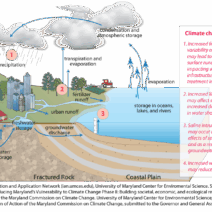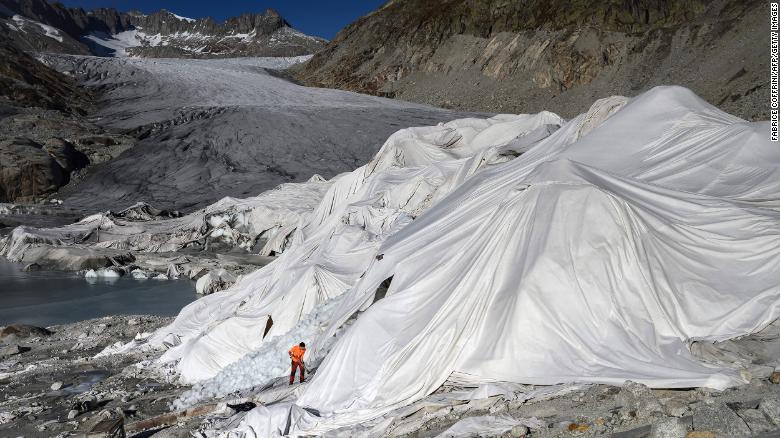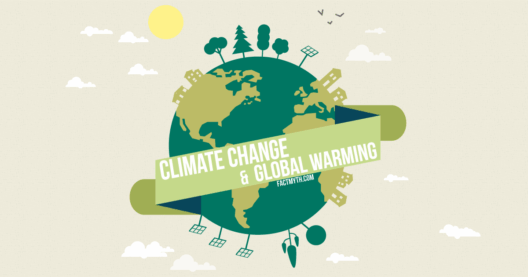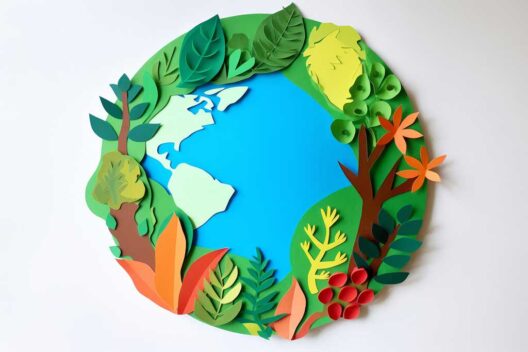Climate change represents one of the most pressing issues of our time, a hydra of adversities admitting any glimpse of resolution. In contemplating the question, “What contributes most to climate change?” one might find themselves in a labyrinth of factors. But what if—just for a moment—we fancifully posed the question: “What if we could pin down the biggest culprits behind this global crisis?” Let’s embark on an intellectual exploration of the most significant contributors to climate change.
First and foremost, the most notorious offender is the emission of greenhouse gases (GHGs). These gases trap heat in the atmosphere, creating a phenomenon known as the greenhouse effect. Carbon dioxide (CO2) reigns supreme among GHGs, primarily generated through the burning of fossil fuels for energy. The transportation sector alone, comprising automobiles, trucks, ships, and airplanes, accounts for a substantial portion of these emissions. To illuminate this, it is worth noting that a single gallon of gasoline combusted produces approximately 19.6 pounds of CO2. With millions of vehicles crowding roads globally, the cumulative impact becomes almost unfathomable.
Additionally, industrial activities contribute significantly to GHG emissions. From manufacturing goods to processing materials, industrial processes emit a myriad of gases. One classic example is cement production, which not only requires enormous quantities of fossil fuels but also releases CO2 during the chemical transformation of limestone into clinker. Humanity’s insatiable thirst for construction and development relentlessly fuels this cycle, whereby we build to advance yet inadvertently, lay the groundwork for future challenges.
However, GHG emissions do not emerge solely from energy production and industry. Agricultural practices also play a pivotal role. The livestock sector alone generates approximately 14.5% of global GHG emissions, primarily in the form of methane—a gas significantly more potent than CO2 in terms of its heat-trapping capability. Animal husbandry, particularly cattle, contributes to this phenomenon through enteric fermentation—a natural digestion process that releases methane. Furthermore, when manure is managed improperly, it also produces methane and nitrous oxide (another potent GHG), which seeps into our atmosphere. Hence, the irony presents itself: our craving for meat and dairy is not just a dietary concern, but an ecological dilemma.
Forestry is another critical component in the conversation surrounding climate change. Deforestation, especially in tropical regions, contributes to the problem. Trees act as carbon sinks; they absorb CO2 from the atmosphere. When these trees are felled, not only is the potential for carbon absorption eliminated, but the act of cutting them down often results in the release of stored carbon. Moreover, the clearing of forests for agriculture or urban sprawl further exacerbates this issue. An estimated 10 million hectares of forest vanish each year, a truth that underscores the severity of our actions.
Then, there’s the often-overlooked aspect of waste management. Landfills are notorious for producing methane as organic material decomposes anaerobically. Landfills are among the largest sources of methane emissions in various regions. The grim irony here is that while we espouse modernization, we do so without adequately addressing the waste continuum—a circular issue that demands immediate attention. Better waste management practices, such as composting and recycling, can significantly mitigate these emissions.
Urbanization also plays a significant role in climate change. The rapid growth of cities has led to increased energy consumption, transportation emissions, and wasted resources. Urban heat islands, a phenomenon where urban areas become significantly warmer than their rural surroundings, intensify energy demands for cooling in warmer months. They can amplify the effects of climate change, creating a vicious cycle where the very solutions intended to mitigate the crisis become harbingers of greater challenges.
If one were to amalgamate these factors into a more digestible format, we might say that the main culprits of climate change span five domains: transportation, industry, agriculture, forestry, and waste management. Faced with this reality, a pressing challenge emerges: how do we make significant changes in our daily lives and governance structures to curtail these emissions? It necessitates a collective recognition that individual actions coupled with influential policies can yield substantial results.
Consider the power of simple lifestyle adjustments—could individual choices regarding diet, waste disposal, and energy consumption fundamentally shift the momentum of climate change? If every person committed to reducing their carbon footprint, we collectively wield the potential for transformative change. For instance, opting for plant-based meals even a few times a week can dramatically reduce methane emissions associated with livestock farming. Additionally, promoting the circular economy, which emphasizes reusing and recycling materials, can significantly alleviate waste-associated emissions.
Moreover, advocacy for policies aimed at reducing GHG emissions can catalyze administrative action. A shift towards renewable energy sources—solar, wind, and hydroelectric—forms a crucial pillar in combating climate change. These alternatives not only mitigate the impacts but also promote sustainable economic growth by creating jobs in emerging industries.
The time for contemplation has long passed; the question now beckons—what actions will you take? Will you endeavor to understand the plethora of contributions to climate change, or will you allow ignorance to perpetuate? The necessary knowledge is at your fingertips; the responsibility lies in your daily choices and collective actions. This challenge isn’t merely academic; it is foundational for the survival of ecosystems, communities, and future generations.







